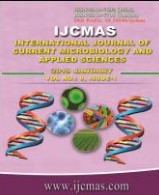


 National Academy of Agricultural Sciences (NAAS)
National Academy of Agricultural Sciences (NAAS)

|
PRINT ISSN : 2319-7692
Online ISSN : 2319-7706 Issues : 12 per year Publisher : Excellent Publishers Email : editorijcmas@gmail.com / submit@ijcmas.com Editor-in-chief: Dr.M.Prakash Index Copernicus ICV 2018: 95.39 NAAS RATING 2020: 5.38 |
Hot-spot biodiversity is a concentrated site of high species diversity, high species endemicity, and habitat uniqueness. Biodiversity disperses unevenly across the global, regional and regional scope. Hot-spot biodiversity developed into an approach to assessing the concentration of biodiversity at certain limits. The biodiversity hot-spot approach is conducted using indicator species such as bird species that are used as ecotourism development for sustainable forest exploitation. Research with objectives: Determine the location of biodiversity hot-spot within Production Forest Management Unit (PFMU) Wae Sapalewa area, measure the importance of hot spot location, and provide appropriate ecotourism form directions at hot spot locations. The research used survey method with area tracing technique to determine the biodiversity hotspots as well as Point Count and Encounter Rates method to collect information of indicator bird species. The results of the study determined 7 locations of biodiversity hot-spot within PFMU Wae Sapalewa area which contained tourist attraction object, in the form of bird species biodiversity with certain status. It is recorded as many as 122 species of birds; 4 endangered species globally, 9 species endemic Seram Island, 6 unique species, 21 types of limited distribution. This particular type of bird is classified into 27 species of "Bird Indicators" considered as objects of ecotourism attraction. Calculation Index of diversity type shows 7 hot-spot location has high diversity index value, calculation result of relative abundance of indicator bird species shows variation of abundance which is indicative of existence condition and status of bird species in hot spot location. The results of the analysis lead to the form of ecotourism in the form of ecotourism of special interest in the form of Bird Watching.
 |
 |
 |
 |
 |